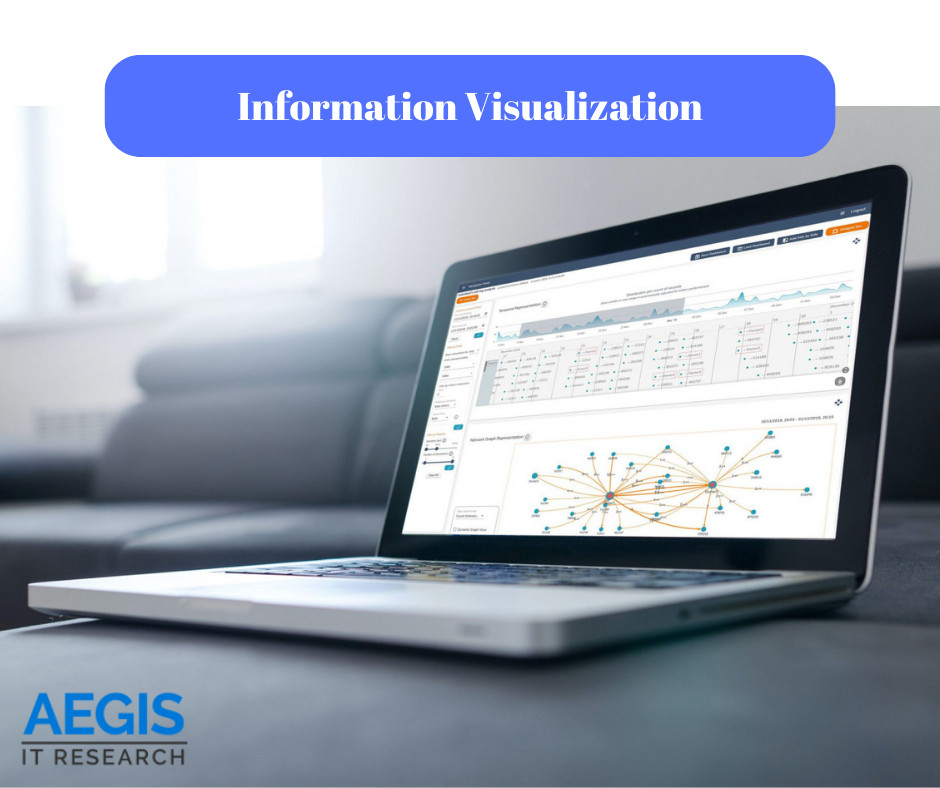In today’s fast paced and fast changing world, making quick and informed decisions for resolving challenges is essential. This requires a solid understanding and knowledge about a specific topic, be it financial, business related, medical, or for security reasons.
Decision making is the process of making choices by identifying a need, gathering information, and assessing alternative resolutions. This is a process that may require a significant amount of time to perform (Reani et al. 2019). The reasoning and judgment of the evaluation of a set of alternatives for finding a solution can be cognitively demanding and complex (Bajracharya et al. 2014). Here is where information visualization (InfoVis) can help people in decision-making processes, as InfoVis is beneficial for summarizing essential information and understanding it.

For a long time, researchers have explored how to create visualizations for successful user cognition, and in recent years it has been facilitated by advancements in computing power to generate and test more advanced, interactive data. InfoVis is widely used for improving comprehension in a variety of industries. It can take many forms, including quantitative graphs, qualitative diagrams, abstract visual metaphors, and artistic imagery, among others (Eberhard, 2023). According to cognitive psychology research, visual information may even be preferred than verbal alternatives, because visual input is naturally richer than verbal and symbolic information (Meyer, 1991; Eberhard, 2023).
Given that users can consume information effectively, InfoVis allows them to increase the accuracy and quality of their decision-making process. According to the cognitive load theory, pictures provide an external representation of knowledge that may be quickly referred to at any time, requiring less working memory (Suwa and Tversky, 2002). Furthermore, unlike text, pictures allow for a simpler staring pattern, allowing the user to lessen the cognitive work required for the specific job at hand (Allen and colleagues, 2014). Overall, visualizations increase awareness of uncertainty, particularly in ambiguous and uncertain managerial decision-making. According to previous research, visualizations can reduce common understanding issues by helping the user to make more correct statistical use of the available probabilities (Allen et al. 2014; Wu et al. 2017; Stone et al. 2018).
Finally, InfoVis allows for less cognitive processing because visual representations enable users to comprehend and make decisions more quickly (Block 2013) and more efficiently (Falschlunger et al. 2014; Vila and Gomez 2016). It is important to note that such visual representations must be optimally designed, in order to allow users to be focused on the relevant, informative parts. Nonetheless, it also should be noted that how effective are visualizations depends on the environment and the individual characteristics of the user. For example, some people prefer visual information over other types of information.
In sum, we argue that self-adaptive and interactive InfoVis systems are vital to be developed nowadays because they can greatly facilitate time-critical or time-sensitive decision-making in specialized industries. Such InfoVis systems are very much needed because they can provide the user with meaningful and actionable information in a succinct, easy-to-understand format.
References
- Allen P.M., Edwards J.A., Snyder F.J., Makinson, K.A., Hamby, D.M. (2014) The efect of cognitive load on decision making with graphically displayed uncertainty information. Risk. Anal. 34:1495–1505. https://doi.org/10.1111/risa.12161
- Bajracharya S., Carenini G., Chen K., Klein, D., Poole, D., Taheri, H., Öberg, G. (2014) Interactive visualization for group decision analysis. Int. J. Inf. Technol. Decis. Mak. 17:1839–1864. https://doi.org/10.1142/s0219622018500384
- Eberhard, K. (2023). The effects of visualization on judgment and decision-making: a systematic literature review. Management Review Quarterly, 73(1), 167-214.
- Falschlunger L., Eisl C., Losbichler H., Greil A. (eds) (2014) Improving information perception of graphical displays – an experimental study on the display of column graphs. In: Proceedings from the 22th international conference in central europe on computer graphics, visualization and computer vision.
- Meyer A.D. (1991) Visual data in organizational research. Organ Sci 2:218–236. https://doi.org/10.1287/orsc.2.2.218
- Reani M., Peek N., Jay C. (2019) How diferent visualizations afect human reasoning about uncertainty: an analysis of visual behaviour. Comput. Hum. Behav. 92:55–64. https://doi.org/10.1016/j.chb.2018.10.033
- Stone, E.R., Reeder, E.C., Parillo, J., Long, C., Walb, L. (2018). Salience versus proportional reasoning: Rethinking the mechanism behind graphical display effects. Journal of Behavioral Decision Making, 31(4), 473-486.
- Suwa M., Tversky B. (2002) External representations contribute to the dynamic construction of ideas.
- Vila J., Gomez Y. (2016) Extracting business information from graphs: an eye tracking experiment. J. Bus. Res. 69:1741. https://doi.org/10.1016/j.jbusres.2015.10.04
- Wu C.M., Meder B., Filimon F., Nelson J.D. (2017) Asking better questions: How presentation formats influence information search. J. Exp. Psychol. Learn. Mem. Cogn. 43:1274–1297. https://doi.org/10.1037/xlm0000374
